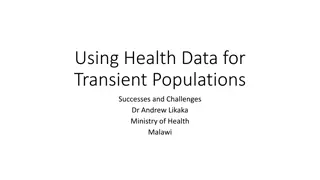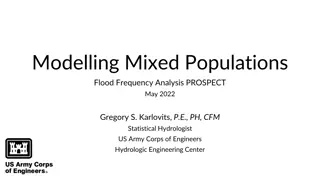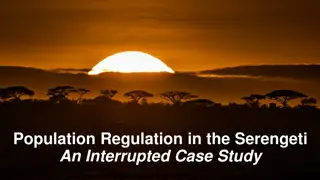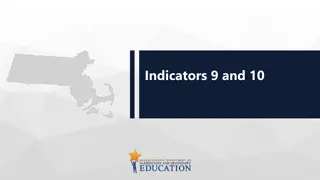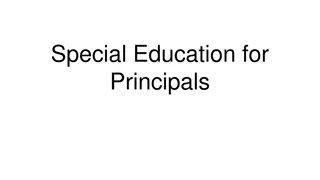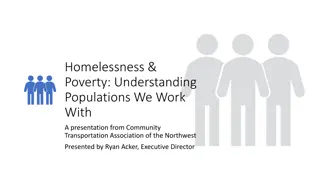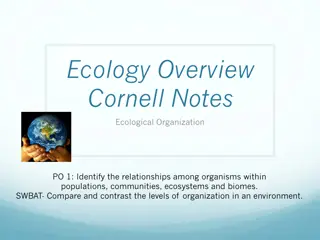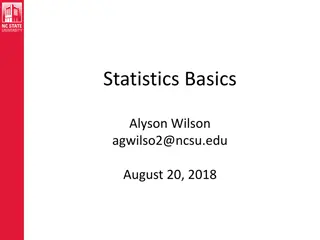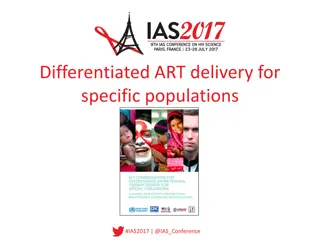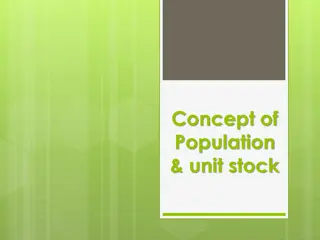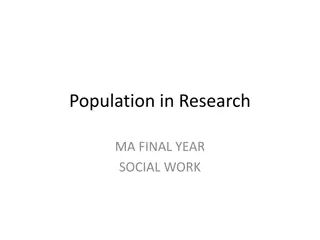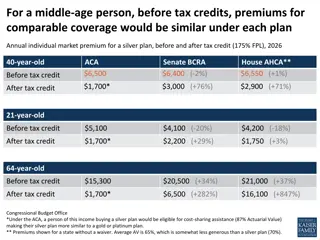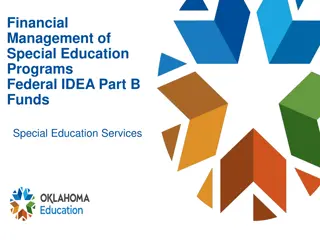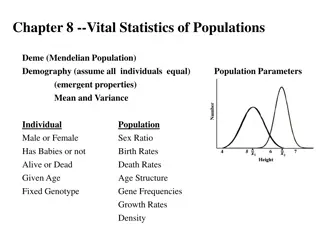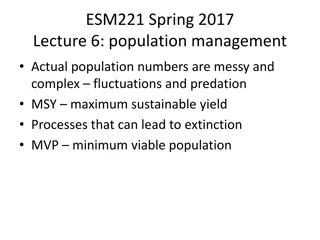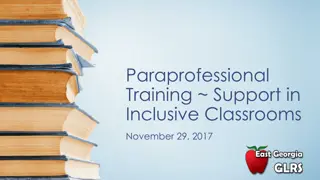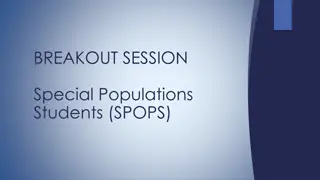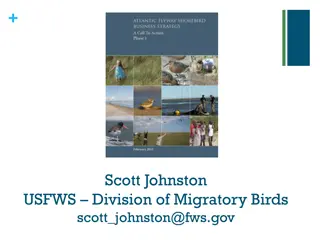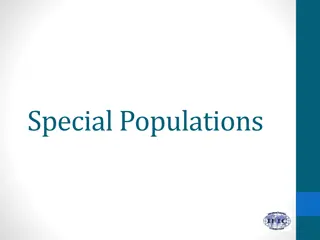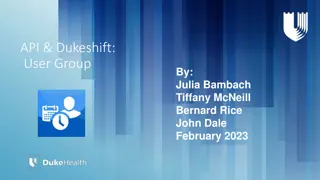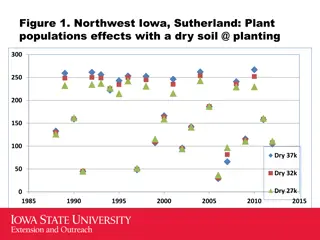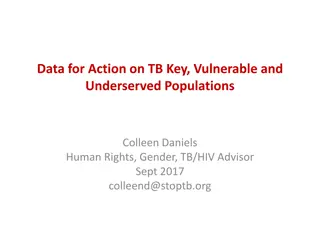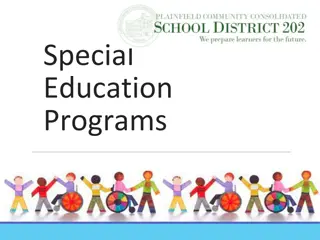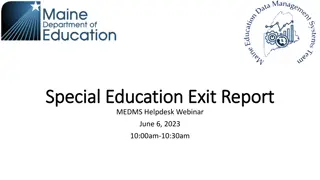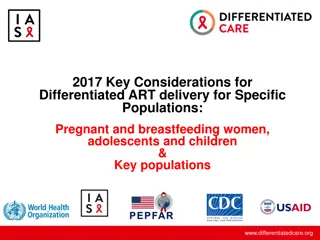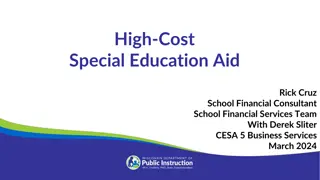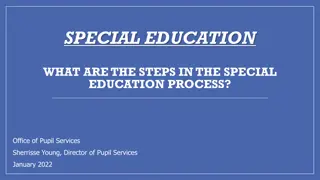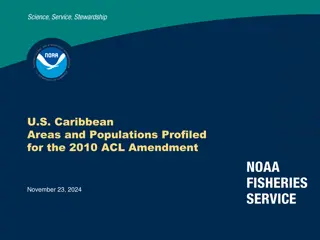Community-Based Participatory Research for Hard-to-Reach Populations: A Collaborative Approach
This presentation focuses on community-based participatory research for hard-to-reach populations, particularly on implementing harm reduction strategies for amphetamine-type stimulant (ATS) use. It addresses community engagement, outreach to hidden sites, societal perceptions of drug use, and the c
0 views • 25 slides
Fostering Openness in ODL for Marginalized Students
Student access and success in universities, especially for marginalized populations, is a complex issue in South Africa. This study by Dr. Alice Mkuzangwe from the University of South Africa explores the dimensions of openness in Open and Distance Learning (ODL) and identifies factors affecting marg
1 views • 29 slides
Special Services Programs at Sedalia School District #200
Special Services at Sedalia School District #200 include Special Education, Early Childhood Special Education, REACH Gifted Program, Health Services, Homebound, and Juvenile Intervention Program. The district focuses on providing a challenging education in a safe environment to all students, aiming
0 views • 11 slides
Enhancing Health Data Usage for Transient Populations in Malawi
Exploring the challenges and successes in using health data for transient populations in Malawi, this presentation covers migration trends, potential opportunities, and recommendations for data use and exchange. Case studies illustrate the complexities of managing health data for mobile populations,
1 views • 15 slides
FDA Perspective on Epidemiological Cut-off Values (ECVs)
The FDA presents insights on the development and use of Epidemiological Cut-off Values (ECVs) to distinguish wild-type populations from those with acquired resistance mechanisms. ECVs are crucial for determining antimicrobial susceptibility and guiding treatment decisions. The process involves analy
0 views • 13 slides
Understanding Populations: Factors Affecting Growth and Dynamics
In the study of populations, factors like carrying capacity, density-dependent, and density-independent growth play crucial roles. Learn about estimating population size, dispersion patterns, growth rates, and more to understand how populations change over time.
0 views • 25 slides
Understanding Mixed Populations in Flood Frequency Analysis
In this presentation by Gregory S. Karlovits, P.E., PH, CFM, a statistical hydrologist from the US Army Corps of Engineers, the focus is on modelling mixed populations in flood frequency analysis. The key topics include revisiting the IID assumption, identifying mixed populations, and building model
0 views • 38 slides
Understanding Special Populations Students in CTE Programs
Special Populations Students in Career and Technical Education (CTE) programs include individuals with disabilities, economically disadvantaged individuals, single parents, English Language Learners, migrants, homeless individuals, and more. These students may require Individualized Education Progra
0 views • 9 slides
SEN Provision at Bishop Challoner School: Supporting Students with Special Educational Needs
Bishop Challoner, a Voluntary Aided Catholic Secondary School, prioritizes the well-being and academic success of students with special educational needs (SEN). The school's inclusive environment and supportive policies aim to cater to the unique needs and aspirations of every student. Parents are e
0 views • 7 slides
Population Regulation in the Serengeti: An Interrupted Case Study
Explore the fascinating dynamics of population regulation in the Serengeti National Park through a series of slides covering factors influencing wildlife populations, such as bottom-up and top-down controls, density-dependent and independent factors, and the impact of diseases like rinderpest on mig
0 views • 20 slides
Analysis of Indicators 9 & 10 in Special Education Representation
The indicators 9 and 10 focus on the disproportionate representation of racial and ethnic groups in special education programs. Specifically, Indicator 9 looks at the overall disproportionate representation of groups eligible for special education, while Indicator 10 examines the disproportions with
1 views • 8 slides
Understanding Special Education Monitoring and Support for Principals
Special Education for Principals involves navigating a complex world of federal and state rules under the Individuals with Disabilities Education Act. Principals play a crucial role in monitoring and supervising special education, despite facing challenges due to lack of dual licensing. Special Educ
1 views • 29 slides
Understanding Populations in Homelessness and Poverty Presentation
This presentation by the Community Transportation Association of the Northwest, presented by Ryan Acker, delves into the importance of understanding homelessness and poverty. It highlights the challenges faced by vulnerable populations, such as homeless individuals, those living in poverty, people w
0 views • 53 slides
Understanding Ecological Organization in the Environment
Explore the relationships among organisms within populations, communities, ecosystems, and biomes. Delve into the levels of organization in different environments, from populations to the biosphere. Learn about primary and secondary succession, pioneer species, and how environments form. Discover th
1 views • 19 slides
Understanding Basic Concepts in Statistics
This content covers fundamental concepts in statistics such as populations, samples, models, and probability distributions. It explains the differences between populations and samples, the importance of models in describing populations, and discusses various distributions like the normal and Poisson
0 views • 42 slides
Optimizing Antiretroviral Therapy Delivery for Specific Populations
Tailored antiretroviral therapy (ART) delivery models benefit stable patients by addressing inequities and involving key populations. Differentiated care extends to adolescents, pregnant women, and key populations, emphasizing psychosocial support. Transitioning between client categories is crucial
0 views • 6 slides
Understanding the Concept of Population and Unit Stock
The concept of population revolves around all organisms of the same species living in a specific area capable of interbreeding. It is essential to differentiate between sample populations and real populations to accurately study their attributes such as birth rates, death rates, and spatial dimensio
0 views • 15 slides
Understanding Research Populations in Social Work Studies
Research populations in social work studies play a crucial role in forming the basis for data collection and analysis. The definition, types (target and accessible populations), and challenges faced by researchers in testing entire populations are explored in this informative content.
0 views • 5 slides
Higher Premium Impact on Older and Low-Income Populations Under BCRA
Premium comparisons reveal that low-income, older adults face substantial increases in premiums under the Senate BCRA compared to the ACA. States with older, lower-income, and rural populations would experience over 100% higher average premiums under the BCRA. The BCRA could result in significant di
2 views • 5 slides
Martin County Board of Education Reorganization Study Overview
The Martin County Board of Education conducted a comprehensive study on Edna Andrews Elementary School as part of a wider reorganization plan for the school system. The study focused on various factors such as student welfare, facility costs, enrollment changes, and inconvenience to students. The pl
0 views • 29 slides
Understanding Financial Management of Special Education Programs
Federal IDEA Part B funds support special education programs, helping LEAs implement IDEA. These funds must be used for allowable purposes like special education services, appropriate technology, and early intervening services. It's essential to use IDEA Part B funds to pay for excess costs and supp
1 views • 105 slides
Understanding Vital Population Statistics and Demography
Exploring vital statistics of populations with a focus on Mendelian populations and demography, analyzing factors like sex ratio, birth rates, death rates, age structure, gene frequencies, growth rates, and population density. The content delves into emergent properties, mean and variance population
0 views • 9 slides
Population Management and Sustainable Harvesting Strategies
Actual population numbers exhibit complex fluctuations influenced by predation and other factors. Understanding concepts like Maximum Sustainable Yield (MSY) and Minimum Viable Population (MVP) can help in managing populations effectively. The concept of MSY ensures the maximum harvest of a renewabl
0 views • 32 slides
Benefits of Inclusive Education for Paraprofessionals in Inclusive Classrooms
Inclusive education in classrooms provides numerous benefits, such as increased communication and collaboration among educational team members, more personalized attention for students, and quicker achievement of results through teamwork. Special education areas of exceptionality and the referral pr
6 views • 33 slides
Understanding Special Populations Students in CTE Programs
Students who have special learning needs are considered special populations students in CTE programs. They include individuals with disabilities, economically disadvantaged individuals, single parents, English Language Learners, migrants, homeless individuals, youth in foster care, and youth with pa
0 views • 9 slides
Understanding Aquatic Epidemiology in Fish Populations
Aquatic epidemiology is a crucial branch of science that focuses on describing the health, diseases, and welfare of fish populations. It involves studying diseases in wild and hatchery-raised fish, identifying factors influencing disease occurrence, and conducting diagnostic investigations to mainta
0 views • 12 slides
Addressing the Decline of Shorebird Populations in the Atlantic Flyway
The presentation focuses on the concerning decline in shorebird populations within the Atlantic Flyway, emphasizing the urgency for increased conservation efforts. It highlights specific species affected by the decline and proposes a comprehensive business strategy involving multiple partners to rev
0 views • 10 slides
Supporting Students with Challenging Behaviours in SEN Settings - Insights from Our Lady of Good Counsel Special School
Siobhan Allen, a former principal, shares experiences from Our Lady of Good Counsel Special School, focusing on supporting students with serious challenging behaviours in SEN settings. The school, established in 1957, provides educational services to students with moderate to multiple disabilities.
0 views • 26 slides
Understanding Healthcare-Associated Infections in Special Populations
Delve into the vulnerabilities of special populations like geriatrics, pediatrics, burns patients, and more to healthcare-associated infections. Learn about specific risk factors, infection prevention strategies, and respiratory, skin, and diarrhea risk factors unique to geriatric patients.
0 views • 43 slides
DukeShift User Group and Special Codes Overview
Explore the DukeShift user group details featuring Julia Bambach, Tiffany McNeill, Bernard Rice, John Dale, and updates for February 2023. Learn about new special codes for virtual nursing, quick special code review, VA and SC special codes, and reporting on special codes. Dive into essential topics
0 views • 11 slides
Analysis of Plant Populations Effects in Various Regions of Iowa
The figures depict the impact of plant populations on yield in different regions of Iowa under dry soil conditions. The data spans several years, showing trends in plant populations and corresponding yields over time. Each figure focuses on a specific region, providing insights into agricultural pra
0 views • 8 slides
Special Education Data and District Profile in Missouri 2023
This data and district profile report by the Office of Special Education in Missouri provides valuable insights into early childhood special education, educational environments, transition from First Steps, and early childhood outcomes. It highlights the importance of updated data on Core Data scree
2 views • 18 slides
Understanding and Prioritizing Tuberculosis Key Populations for Action
This collection of resources explores the identification, understanding, and prioritization of key populations affected by tuberculosis (TB), focusing on vulnerable and underserved communities. It delves into the framework for structuring programs, factors contributing to disease burden, and a range
0 views • 8 slides
Understanding Special Education Programs and Services
Explore the least restrictive environment (LRE) continuum for students with disabilities, ranging from general education classrooms to specialized programs. Learn about a variety of programs and services tailored to meet individual needs, including resource services, co-teaching, and instructional s
0 views • 20 slides
Special Education Exit Reporting Guidelines
Guidelines for reporting special education exits including requirements, deadlines, and instructions. Learn how to access, certify, and navigate the Special Education Exit Report in the NEO system. Ensure accurate data entry and certification for students who have exited special education services.
0 views • 17 slides
Key Considerations for Differentiated ART Delivery for Specific Populations
This collection of resources discusses key factors in differentiated approaches to HIV care, focusing on pregnant and breastfeeding women, adolescents, children, and key populations such as people who inject drugs, sex workers, men who have sex with men, transgender individuals, and those in prisons
0 views • 14 slides
Maryland Special Education Parent Involvement Survey FAQ
The Maryland Special Education Parent Involvement Survey aims to assess parental engagement with schools in supporting special education students. Parents/guardians of children aged 3 to 21 receiving special education services are required to complete the survey either online or on paper. Feedback f
0 views • 9 slides
Understanding High-Cost Special Education Aid Program
This information covers the High-Cost Special Education Aid program, including eligibility criteria, reimbursement processes, claim submissions, and identifying high-cost SPED students. It explains what constitutes excess costs in special education, outlines the necessary steps and documents require
0 views • 9 slides
Understanding the Special Education Process
Special education involves a multi-step process that includes determining eligibility, individualized education programs, referrals, evaluations, and more. The process aims to meet the unique needs of students with disabilities through specially designed instruction and services provided at no cost
0 views • 20 slides
U.S. Caribbean Areas & Populations 2010 Profile: Amendment Overview
The presentation outlines mandates under NEPA and Magnuson-Stevens Act for considering affected populations in U.S. Caribbean areas. It covers demographics, poverty rates, and racial populations, focusing on St. Croix, St. Thomas/St. John, and Puerto Rico.
0 views • 38 slides



